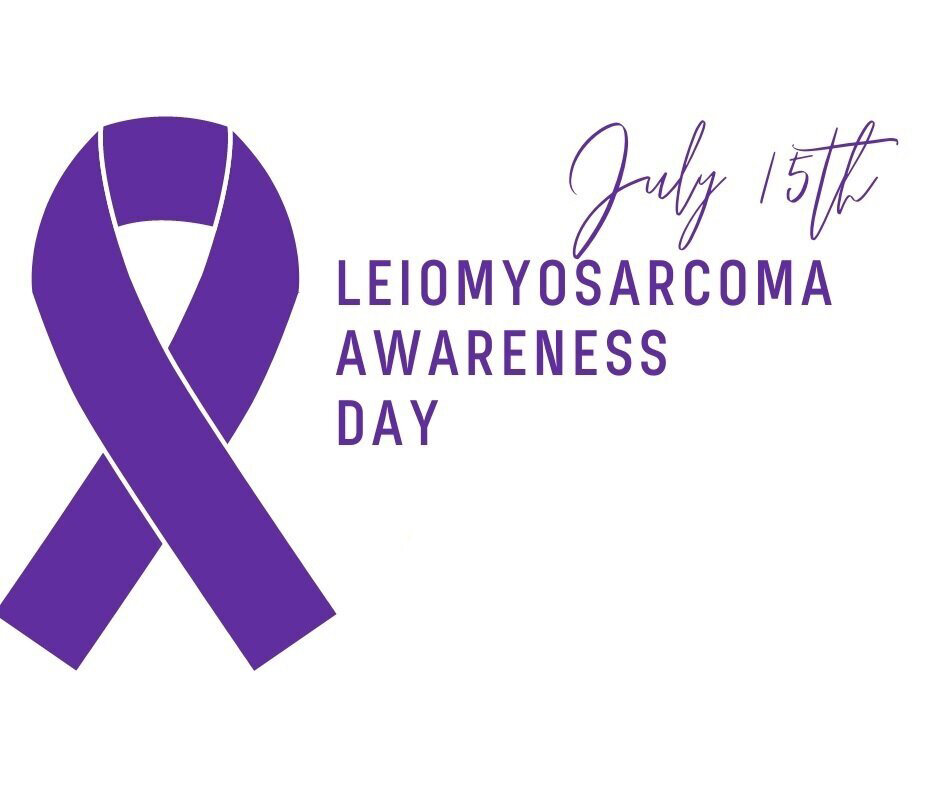Frequently Asked Questions (FAQ)
What is leiomyosarcoma?
Leiomyosarcoma (LMS) is a cancer which starts in the smooth involuntary muscles, like blood vessels, uterine or retroperitoneal muscles. These are connective tissues so they are grouped as a sarcoma – of which LMS is one of the most common of the 80 sarcoma subtypes. All sarcomas are genetically unique and respond to treatments differently. See Leiomyosarcoma Information and Uterine Leiomyosarcoma Information
How do you pronounce leiomyosarcoma?
LY-oh-MY-oh-sar-KOH-muh
Is leiomyosarcoma caused by the environment or genetics?
LMS is caused by gene mutations in the DNA of a single smooth muscle cell that has multiplied itself. What caused this mutation is unknown. More research is needed.
Is leiomyosarcoma inherited from a family member?
LMSDR has documented cases of about 11 families where both a parent and child or sisters, have LMS. However, with the majority of patients, there are no other known family members with LMS. In the above cases, it is not known if there was a genetic link or environmental one. There are two genetic disorders associated with leiomyosarcoma: retinoblastoma and Li Fraumeni syndrome.
What are the most important things to do when first diagnosed?
Consult a sarcoma specialist before deciding on a treatment.
Make notebook – keep copies of all reports: pathology, radiology, surgical, lab tests and doctor’s notes. Keep phone numbers and appointment notes organized.
IF you had uterine LMS, ask your oncologist to order estrogen and progesterone testing on your tumor. If positive you could be a candidate for aromatase inhibitors (estrogen blockers post menopause.)
Get follow-up scans every 3-4 months for the first 2 years.
Join our Facebook group for information and support.
Research! Know you options and make informed decisions.
What is the most effective treatment?
Surgery with wide margins is the gold standard treatment for leiomyosarcoma. We say, “When in doubt, cut it out!” Make an appointment and discuss your options with the surgeon, who knows best if surgery is an option. When surgery is not possible, discuss chemotherapy and immunotherapy options with your oncologist. You can also consult the interventional radiologist for targeted radiation methods which can also be very effective. Please see LMS Boot Camp videos for more details.
Can leiomyosarcoma be cured?
Stage IV sarcomas are rarely curable. But some patients may be cured if the main tumor and all of the areas of cancer spread (metastases) can be removed by surgery. Your chances of survival are higher if you seek the advice of a sarcoma specialist at a high volume sarcoma center. See https://www.cancer.org/cancer/soft-tissue-sarcoma/treating/by-stage.html
Where can I find a sarcoma specialist or sarcoma center?
Please get a second opinion with a high volume sarcoma center and specialist. Research shows that those who see sarcoma specialists live longer than those who don’t. Leiomyosarcoma is so rare, that most local oncologists have never treated it before and can make major mistakes in treatment planning. See our list of sarcoma centers.
How rare is leiomyosarcoma?
It is estimated to occur in 10 people in 1 million. To give perspective, sarcomas represent only 1% of all cancers, and LMS is one of 80 subtypes of sarcoma. Because of this rarity, you must get 2nd opinions from a sarcoma specialist, who has treated hundreds of patients and stayed current on the research. LMSdr funds only LMS specific research.
What is the proper follow-up surveillance for leiomyosarcoma?
Sarcoma specialists recommend CT or MRI scans of the chest, pelvis and abdomen:
every 3-4 months until one is NED (no evidence of disease) for 2 years.
every 6 months after you have been NED for 2-3 years
once a year after you have been NED for 5 years and more
If you get a new tumor then you go back to every 3-4 months. Please also watch the LMS Boot Camp videos.
What does grade mean?
Grading refers to the appearance of cancer cells under a microscope. The more abnormal the cell is, the higher the grade and faster growth. Most LMS is high grade.
Also see Common Terms for Leiomyosarcoma
What does stage mean?
The stage of a cancer is a term used to describe its size and whether it has spread beyond its original site. There are two different staging systems for LMS and gynaecological or uterine LMS. Generally speaking, stage 1 means it has not spread from the original site. Stage 4 means it
has spread to a different part of the body (metastasis.) There are no known cures for stage 4 LMS yet, but there are long term survivors who treat stage 4 as a chronic life-long illness.
Also see Common Terms for Leiomyosarcoma
Should I get my tumor tested for hormone receptors?
If your tumor started in tissue that is estrogen sensitive (female reproductive organs and breasts) your tumor may be estrogen sensitive. Ask your doctor to order the pathology tests for estrogen and progesterone receptors. If positive, you might be a candidate to take estrogen blockers for post-menopausal women. See LMS Boot Camp video #7.
How can I get involved and help?
LMSDR uses all volunteers and no paid staff. We need volunteers to help with our website, write, edit, moderate our Face Book Group and most important, fundraise. Please also see Get Involved on our site.


